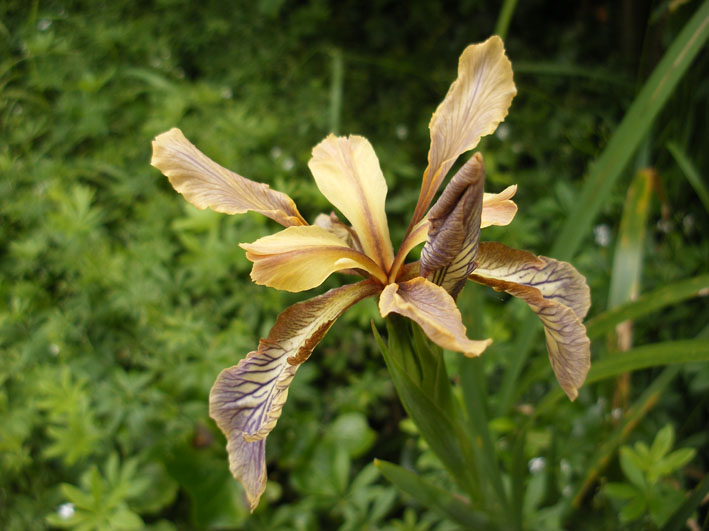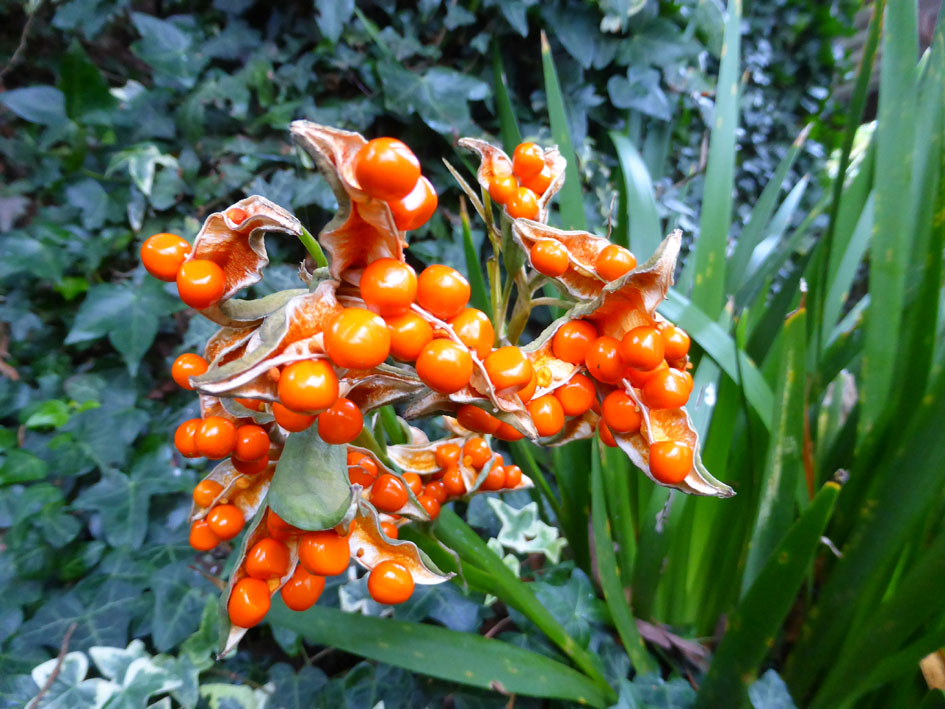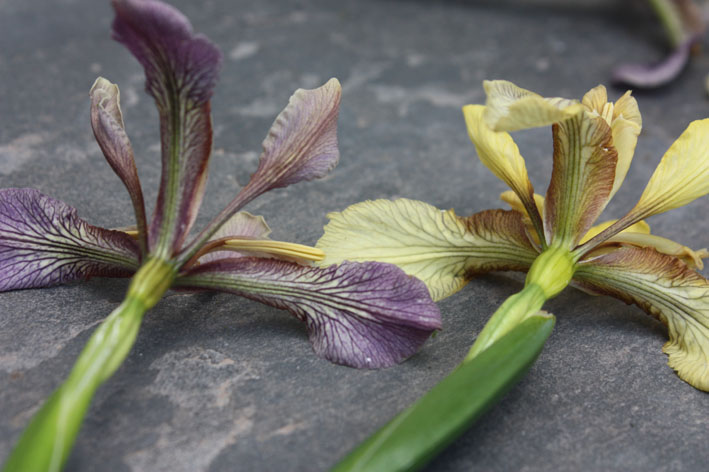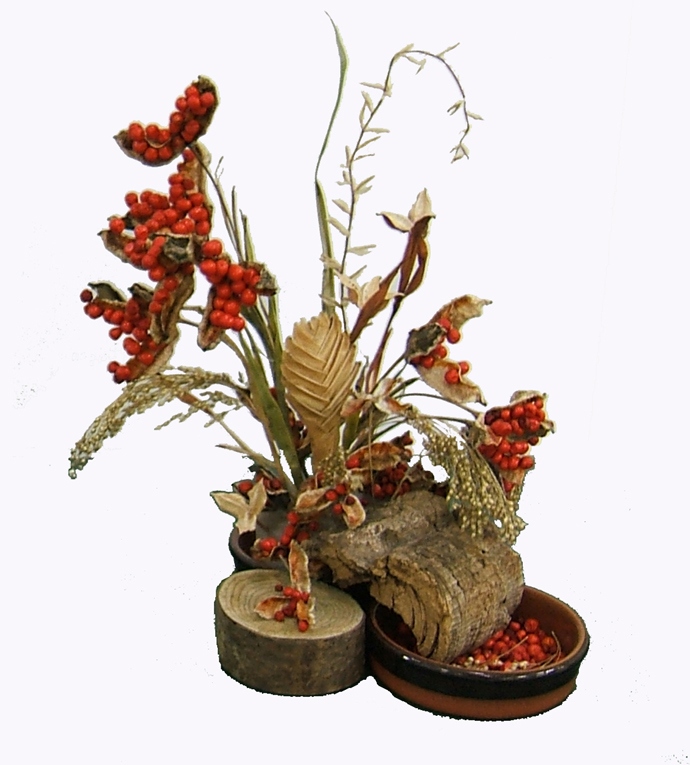Jill's Jots
Roast Beef iris
Of course this is not its real name but one that is commonly used and arises because if you bruise the foliage it is supposed to smell of roast beef. Others local names are stinking iris, blue seggin (sedge like), scarlet-berry and gladdon or gladwyn. Also a Devon friend always refers to the seeds as 'Adder's meat'. I suppose it all depends on local folklore, for it is a British native, its 'proper' name is Iris foetidissima. It is found in various locations, from sea cliffs to deciduous woods, to dry roadsides but not usually in wet conditions and is perhaps more common in the south of the country. I have also seen it growing in churchyards, growing under the yews; I wonder if this is because it is evergreen and that trait is supposed to symbolise life among death or whether it is just a survivor and can cope with an occasional mow!

Primarily it is grown for is deep orange almost red seeds which are prominent in late autumn and often last through the winter. The sight of the green seed pods bursting forth is always a joy especially after a shower when they glisten like jewels. The colour of the seeds varies considerably and there are even yellow and white seeded forms. All are an absolute delight and add a welcome boost of colour at a time when it is most needed, useful for flower arrangements as well. I also grow a variegated form, well I try to grow, as it does seem to struggle for me. But in a garden where I once worked there were drifts growing either side of a path under a pergola covered in roses and it looked smashing throughout the year. In fact my plant is from that garden, (with permission!) but does not yet know how to drift. The garden was in the Chilterns, so I wonder if it has a preference for calcareous soils? If so, this would explain why I have seen it growing in sand-dunes in West Wales, the dunes having a high proportion of crushed shells.


The flowers are often described as nondescript but take a closer look, even in our small patch there is quite a variation. What amazes me even more is when you actually look more closely they are quite beautiful. Apart from the variations that occur, there are several named forms, including I. foetidissima var. citrina which has yellow flowers with brown markings in the haft. Although I don't grow this form, I do have a plant with very yellow flowers which appeared courtesy of the birds! I wonder why they are so over-looked as garden plants, because they do so well even in dry shady conditions. Perhaps it is because they self seed, which I don't mind but others hate. It probably all depends on how tidy you are and now you know that I am not!
